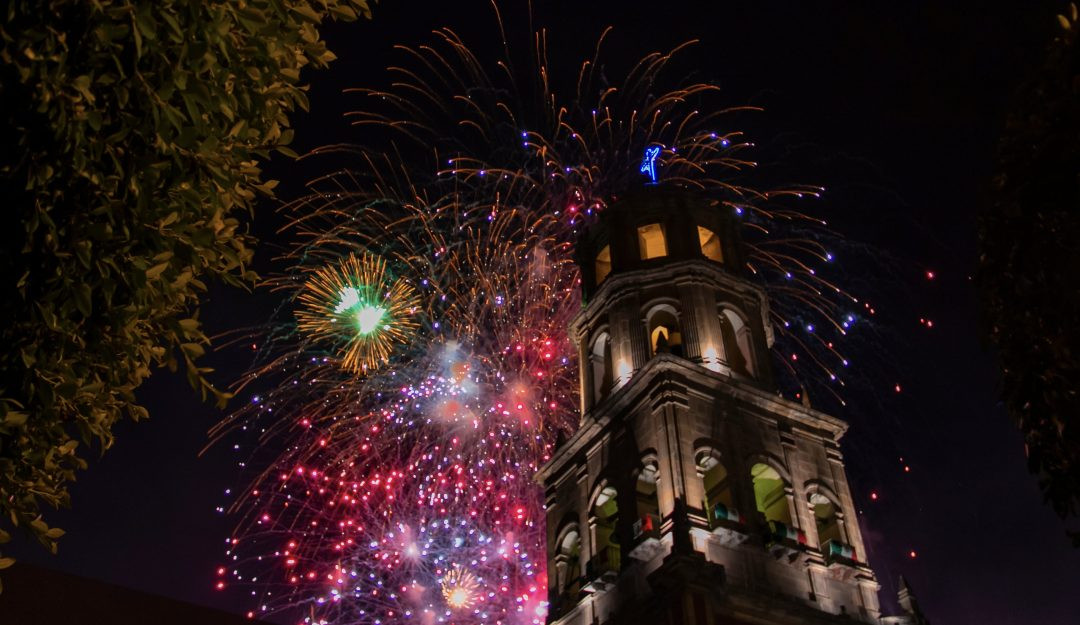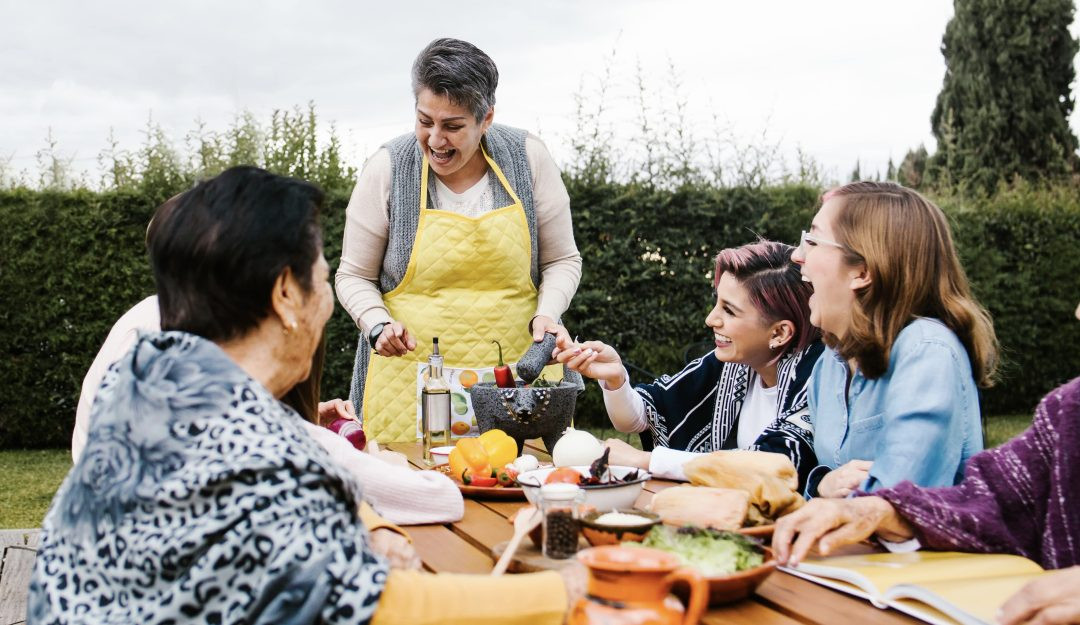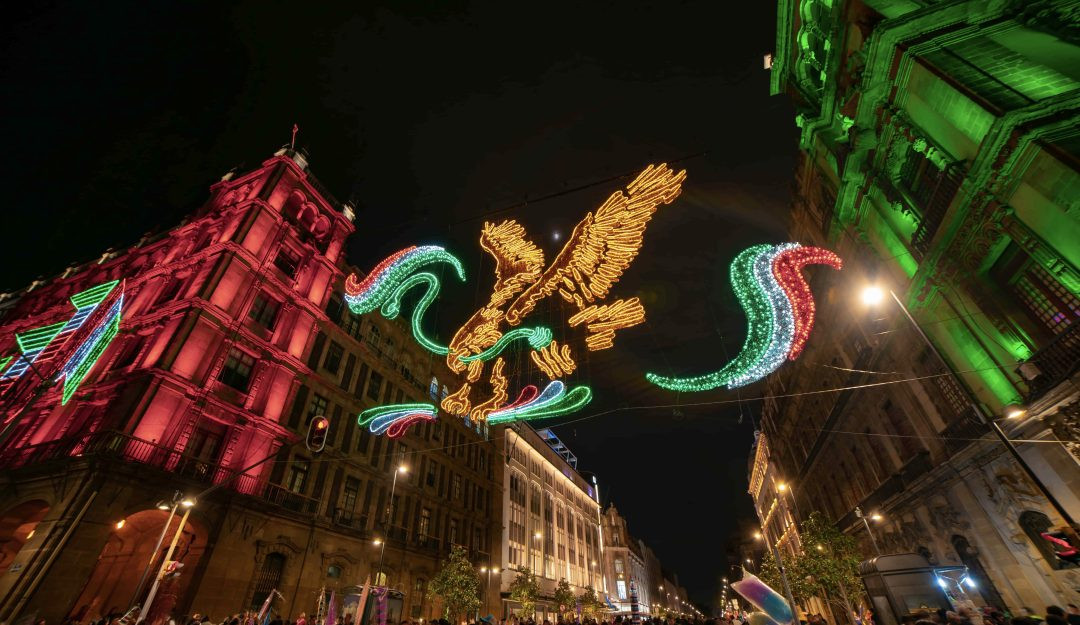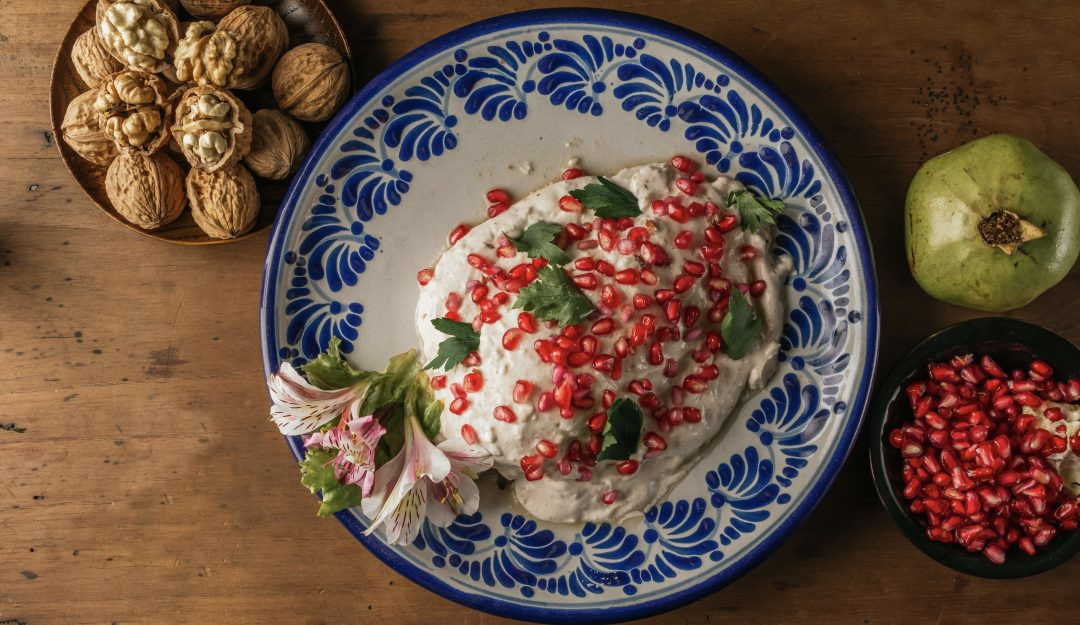Mexican Independence Day, observed annually on September 16th, is a vibrant celebration, deeply intertwined with LGBTQ+ culture and Mexican heritage, and at gaymexico.net, we offer a comprehensive guide to experiencing this festive holiday. Discover Mexico’s autonomous spirit through its historical roots, passionate festivities, and the welcoming embrace of its LGBTQ+ community. Explore our site for more insights on this patriotic celebration, LGBTQ+ travel tips, and community connections.
1. What Date Is Mexican Independence Day?
Mexican Independence Day is always celebrated on September 16th. The celebrations, however, commence on the evening of September 15th. Preparation is vital. People start buying food and drinks a few days in advance for El Grito. This event is a traditional gathering in each major town or city square late in the evening.
The festivities begin early and often last late into the night. September 16th is typically a day of rest, with banks and government offices closed. Parades are common on this day, but the entire month of September, known as el Mes de la Patria, is dedicated to national celebration, honoring Mexico’s autonomy. These celebrations are also known as Fiestas Patrias, or National Festivities, as many Latin American countries celebrate their independence from Spain in September.
 sky-filled-with-fireworks-over-mexico-city-on-mexican-independence-day
sky-filled-with-fireworks-over-mexico-city-on-mexican-independence-day
2. How Did Mexico Gain Its Independence?
Mexico achieved its independence through both political negotiations and armed conflict with Spain. The Spanish began exploring, conquering, and colonizing Mexico in the 16th century. By 1635, they had established the Viceroyalty of New Spain. This territory included Mexico and beyond, governed by a viceroy representing Spain.
The 17th and early 18th centuries saw increased trade, commerce, and the growth of the mestizo community (Spanish and indigenous). In the early 18th century, Spain was ruled by the House of Bourbon, a French dynasty united through aristocratic lineage.
When Napoleon invaded Spain in 1808 and replaced the Spanish king with his brother, Mexicans questioned the legitimacy of Spanish rule, paving the way for independence. Those advocating for Mexican autonomy began planning an armed uprising, organizing an army in Querétaro and Dolores, Guanajuato. Father Miguel Hidalgo emerged as a key leader in this struggle.
On September 16, 1810, Father Hidalgo initiated the coup d’etat, known as the Grito de Dolores, with a flag of the Virgin of Guadalupe in hand. Although Hidalgo and his army achieved significant military gains, he was eventually executed after a defeat. However, the fight for independence continued. In 1812, a constitution was drafted in Spain granting Mexico representation but not autonomy, prolonging the conflict.
José María Morelos, another priest, succeeded Hidalgo but was also eventually defeated and killed. In 1813, Morelos called for an independent nation with equality for all and a national congress.
Vicente Guerrero assumed leadership, and fighting continued until 1821, when the Plan de Iguala, a military alliance, led to the downfall of Spanish rule. This was further aided by instability in Spain. Mexico declared its independence, and the first independent congress was held the following year. After a brief constitutional monarchy, Mexico declared itself a republic with the Constitution of 1824.
3. What Distinguishes Mexico’s Independence Day From Cinco De Mayo?
There’s a major difference. Independence Day is one of Mexico’s biggest celebrations. Cinco de Mayo, on the other hand, is a minor holiday. Banks don’t even close on this day. Celebrated on May 5th, this holiday honors the Battle of Puebla of 1862 against the Second French Empire. This battle occurred long after Mexico’s independence.
After Mexico became an autonomous nation, there were two more wars in that century: the Mexican-American War and the Reform War. These conflicts depleted Mexico’s funds. When Mexico announced it could not pay its debt to foreign nations for two years, France, Britain, and Spain sent ships to Veracruz. France stayed and attempted to create an empire. The Battle of Puebla on Cinco de Mayo was part of the Mexico-France struggle. Despite being outnumbered, the soldiers at Puebla won the battle, boosting morale and demonstrating strength. France withdrew from Mexico a few years later.
Compared to celebrations in Mexico, Cinco de Mayo is more popular in the United States. It has become a celebration of Mexican-American identity and a fun party. Mexican Independence Day and Cinco de Mayo have nothing to do with the Mexican Revolution, which occurred in the early 20th century and is celebrated on November 20th.
4. How Does Mexico Celebrate Its Independence Day?
Mexico celebrates the entire month of September, not just Independence Day. There is a general patriotic feeling throughout the month. People often eat chiles en nogada, the traditional dish for celebrating Mexican independence, because of its national colors. The colors are red, green, and white, the same colors as the national flag. It’s common to see colorful decorations around neighborhoods and in stores. Here are a few of the most common activities.
 mexican-family-gathered-around-the-dinner-table-making-fresh-guacamole
mexican-family-gathered-around-the-dinner-table-making-fresh-guacamole
5. What Is El Grito De Dolores?
El Grito de Dolores commemorates Father Hidalgo’s call to arms in Dolores, Guanajuato, in the early morning of September 16, 1810. Although details are disputed, it is believed that he rang the church bell to summon the townspeople to fight for independence. They took up arms against the Spanish with the Virgin of Guadalupe as their patroness.
Today, this moment is relived in every city across Mexico on the night of September 15. In the capital, the Mexican president appears with the flag on a balcony at 11:00 p.m. Government or municipal presidents do the same in provinces, and Mexican ambassadors may do so in foreign countries.
They shout phrases remembering those who fought for independence and end with ¡Viva México! (“Long Live Mexico!”) and the ringing of a bell. This phrase is often shouted in the streets. Everyone shouts back ¡Viva México! and sings the National Anthem. After that, the festivities officially begin. Some people start their celebration early at home and watch El Grito on television.
6. Are Traditional Festivals And Dance Part Of The Celebrations?
Military parades, fireworks, folkloric music and dance, and presentations by elementary school children can take place on the night of El Grito, on Independence Day, or during the Mes de la Patria.
 lights-shaped-like-an-eagle-hanging-over-the-streets-of-mexico-city
lights-shaped-like-an-eagle-hanging-over-the-streets-of-mexico-city
7. What Celebratory Foods And Drinks Are Typically Served?
The night of September 15 is a time to celebrate with friends and family. The most popular dish for Mexican Independence Day and the Mes Patria is chiles en nogada. This elegant dish consists of red, green, and white food that honor Mexico’s flag colors. The recipe requires about twenty ingredients and multiple steps. It usually takes most of the day to make. A fried or roasted poblano chili is stuffed with picadillo: ground meat with cooked dried fruit. It’s topped with a walnut cream sauce and garnished with pomegranate seeds and parsley. The result is a marvelous combination of sweet and salty flavors with a touch of cream and spice.
Another traditional dish served for this holiday is pozole: a slow-cooked soup with hominy and either pork or chicken, served with fresh vegetables, chili, and tostadas. Other Mexican dishes like enchiladas, guacamole, tamales, or sopa azteca may be served as well.
Tequila, with lime and salt, might accompany the meal and flow into the night. Another item with the colors of the flag that’s popular for this celebration is the drink called Bandera (“Flag”) or Banderita (“Little Flag”). This consists of three shot glasses lined up in a row. You take a sip, one after the other, according to the order of the colors of the Mexican flag: first the lime juice (green), then the tequila (white), and finally the sangrita (red, made with tomato juice and spices).
 a-generous-plate-of-chiles-en-nogada-served-on-mexican-independence-day
a-generous-plate-of-chiles-en-nogada-served-on-mexican-independence-day
8. What Makes Mexican Independence Day A Significant Event For The LGBTQ+ Community?
Mexican Independence Day is not just a celebration of national pride; it’s also an opportunity for the LGBTQ+ community to express their identity and participate in a significant cultural event. The holiday embodies themes of liberation, freedom, and self-determination, which resonate deeply with the LGBTQ+ community. The vibrant parades, festivals, and gatherings provide a visible platform for LGBTQ+ individuals to celebrate their heritage, connect with others, and advocate for equality.
9. How Can LGBTQ+ Travelers Safely And Respectfully Participate In Mexican Independence Day Celebrations?
LGBTQ+ travelers can enhance their experience by researching LGBTQ+-friendly venues and events in cities like Mexico City, Puerto Vallarta, and Guadalajara. These cities often host Pride-related events and celebrations that coincide with Independence Day, creating a welcoming atmosphere. Additionally, it’s advisable to stay informed about local customs and laws, show respect for cultural traditions, and connect with local LGBTQ+ organizations for support and guidance. Resources like gaymexico.net offer valuable information and tips for LGBTQ+ travelers.
10. What Resources Does Gaymexico.Net Offer For LGBTQ+ Individuals Interested In Experiencing Mexican Independence Day?
Gaymexico.net provides a wealth of resources for LGBTQ+ individuals planning to experience Mexican Independence Day. Our website features travel guides to LGBTQ+-friendly destinations in Mexico, listings of gay bars, clubs, and hotels, information on local LGBTQ+ organizations, and tips for staying safe and having a great time. We also offer insights into the cultural and historical significance of the holiday for the LGBTQ+ community.
11. What are the most LGBTQ+-friendly destinations in Mexico to celebrate Independence Day?
Mexico boasts several vibrant and welcoming destinations perfect for LGBTQ+ individuals looking to celebrate Independence Day. Here are a few top recommendations:
| Destination | Why it’s LGBTQ+-Friendly | Independence Day Highlights |
|---|---|---|
| Puerto Vallarta | Renowned for its thriving LGBTQ+ scene, numerous gay bars and clubs, and beautiful beaches. | The city comes alive with patriotic fervor, and many LGBTQ+ venues host special Independence Day parties and events. Enjoy the vibrant atmosphere, traditional Mexican cuisine, and the warmth of the local LGBTQ+ community. |
| Mexico City | A cosmopolitan capital with a diverse and accepting atmosphere, home to a large LGBTQ+ community and numerous cultural attractions. | Mexico City’s Independence Day celebrations are grand and include parades, concerts, and fireworks displays. The LGBTQ+ community actively participates in these events, adding a unique and colorful dimension to the festivities. Explore the city’s historic center and enjoy the vibrant nightlife in LGBTQ+ friendly neighborhoods. |
| Guadalajara | Known for its rich cultural heritage, traditional Mexican charm, and a growing LGBTQ+ scene. | Guadalajara offers a blend of traditional Mexican celebrations and LGBTQ+ events during Independence Day. Experience the city’s historical landmarks, savor authentic Mexican cuisine, and connect with the local LGBTQ+ community at various bars and clubs. |
| San Miguel de Allende | A picturesque colonial town with a thriving arts scene and a welcoming atmosphere for LGBTQ+ travelers. | San Miguel de Allende’s Independence Day celebrations are filled with charm and tradition. The town’s central square comes alive with music, dance, and fireworks. LGBTQ+ visitors can enjoy the festivities in a relaxed and inclusive environment, exploring the town’s art galleries and enjoying its culinary delights. |
| Cancun | Famous for its stunning beaches and a growing LGBTQ+ presence, with several gay-friendly resorts and entertainment options. | Cancun offers a unique blend of beachside relaxation and Independence Day excitement. Many resorts and clubs host special parties and events, catering to both local and international LGBTQ+ visitors. Enjoy the sun, sand, and vibrant nightlife while celebrating Mexico’s independence. |
These destinations provide a blend of cultural richness, LGBTQ+ inclusivity, and festive celebrations, ensuring an unforgettable Independence Day experience in Mexico.
12. Are there any specific LGBTQ+ events or gatherings that coincide with Mexican Independence Day?
While there aren’t LGBTQ+-specific events officially tied to Mexican Independence Day, the spirit of the holiday often blends with existing LGBTQ+ celebrations, especially in larger, more inclusive cities. Here’s what you can expect:
- Pride Celebrations: Some cities may have Pride events leading up to or following Independence Day, creating a festive atmosphere.
- LGBTQ+ Venue Parties: Gay bars and clubs, especially in cities like Puerto Vallarta and Mexico City, often host special Independence Day-themed parties with DJs, traditional music, and festive decorations.
- Community Gatherings: LGBTQ+ organizations may organize picnics, potlucks, or smaller gatherings to celebrate both Mexican heritage and LGBTQ+ identity.
- Increased Visibility: The general atmosphere of patriotism and celebration during Independence Day can lead to increased visibility and acceptance of the LGBTQ+ community in public spaces.
13. What Legal Protections and Social Attitudes Toward LGBTQ+ People Should Travelers Be Aware of in Mexico?
Mexico has made significant strides in LGBTQ+ rights, but the situation can vary depending on the region. Here’s what travelers should know:
| Aspect | Details |
|---|---|
| Same-Sex Marriage | Legal nationwide since 2022. |
| Adoption | Legal in some states; varies by jurisdiction. |
| Anti-Discrimination Laws | Some protection exists at the federal level, but enforcement can be inconsistent. Local laws vary. |
| Social Attitudes | Generally more accepting in larger cities and tourist destinations. Rural areas may be more conservative. Public displays of affection may be met with varying reactions. |
| Safety Tips | Research local laws and customs. Exercise caution in unfamiliar areas. Use reputable transportation services. Trust your instincts. |
| Resources | Consult travel advisories from LGBTQ+ organizations. Connect with local LGBTQ+ groups for support and information. |
14. Where can I find reliable and up-to-date information about LGBTQ+ travel in Mexico?
Finding trustworthy and current details for LGBTQ+ travel in Mexico is essential for a seamless and pleasurable journey. Here are some dependable resources to help you:
- GayMexico.net: Provides travel guides, listings of LGBTQ+-friendly establishments, and insights into the LGBTQ+ scene in various Mexican cities.
- Equaldex: Provides up-to-date information on LGBTQ+ rights and laws in Mexico.
- Human Rights Watch: Monitors human rights issues, including LGBTQ+ rights, in Mexico.
15. How can I respectfully engage with local Mexican culture while celebrating Independence Day as an LGBTQ+ traveler?
Engaging respectfully with local Mexican culture while celebrating Independence Day as an LGBTQ+ traveler enhances your experience and fosters positive interactions. Here are practical tips for embracing Mexican traditions with sensitivity:
- Learn Basic Spanish Phrases: Knowing polite phrases like “por favor” (please), “gracias” (thank you), and “con permiso” (excuse me) shows respect and facilitates communication.
- Respect Local Customs: Observe and adhere to local customs and traditions. Dress modestly when visiting religious sites and be mindful of noise levels in residential areas.
- Engage with the Community: Attend local events, visit markets, and interact with residents. Support local businesses and artisans to contribute to the local economy.
- Be Mindful of Public Displays of Affection: While LGBTQ+ acceptance is growing, public displays of affection may still be met with varying reactions. Exercise discretion and be aware of your surroundings.
- Learn About Mexican History and Culture: Understanding the historical significance of Independence Day and other cultural celebrations enriches your experience and demonstrates genuine interest.
- Show Appreciation for Mexican Cuisine: Indulge in traditional dishes and drinks, such as chiles en nogada, pozole, and tequila. Be open to trying new flavors and ask about the cultural significance of the food.
- Attend Cultural Performances: Experience traditional music, dance, and theatrical performances. Show your appreciation by clapping and engaging respectfully.
- Avoid Stereotypes: Refrain from making generalizations or perpetuating stereotypes about Mexican culture or people. Be open-minded and respectful of diversity.
By following these tips, LGBTQ+ travelers can respectfully engage with local Mexican culture, celebrate Independence Day meaningfully, and create lasting memories.
16. What are some common misconceptions about LGBTQ+ life in Mexico?
Navigating LGBTQ+ life in Mexico requires debunking common misconceptions to promote a more accurate understanding. Here are a few prevalent myths:
- Myth: Mexico is uniformly conservative and unsafe for LGBTQ+ individuals.
- Reality: While attitudes vary by region, many urban areas and tourist destinations are very welcoming and progressive.
- Myth: LGBTQ+ rights are non-existent in Mexico.
- Reality: Mexico has made significant legal strides, including legalizing same-sex marriage nationwide and implementing some anti-discrimination laws.
- Myth: Public displays of affection between same-sex couples are always met with hostility.
- Reality: While caution is advisable in more conservative areas, many public spaces in LGBTQ+-friendly cities are accepting.
- Myth: There is no visible LGBTQ+ community in Mexico.
- Reality: Vibrant LGBTQ+ communities thrive in cities like Mexico City, Puerto Vallarta, and Guadalajara, with numerous bars, clubs, and cultural events.
- Myth: All LGBTQ+ Mexicans are closeted due to social pressure.
- Reality: Many LGBTQ+ individuals live openly and proudly, advocating for their rights and visibility in society.
By challenging these misconceptions, LGBTQ+ travelers and allies can foster a more informed and inclusive perspective on LGBTQ+ life in Mexico.
17. What should I do if I experience discrimination or harassment as an LGBTQ+ traveler in Mexico?
Experiencing discrimination or harassment as an LGBTQ+ traveler in Mexico can be distressing. Here’s what you should do:
- Prioritize Safety: If you feel threatened, remove yourself from the situation immediately and go to a safe location.
- Document the Incident: If possible, record details of the incident, including date, time, location, and description of the individuals involved.
- Report to Authorities: File a report with the local police or tourist authorities. They may be able to provide assistance or investigate the incident.
- Contact LGBTQ+ Organizations: Reach out to local LGBTQ+ organizations for support, guidance, and resources. They can offer advice on legal options and connect you with community support.
- Seek Medical Attention: If you have been physically harmed, seek medical attention as soon as possible.
- Inform Your Embassy or Consulate: Contact your embassy or consulate for assistance. They can provide advice and support, and may be able to intervene on your behalf.
- Share Your Experience: Consider sharing your experience on social media or travel forums to raise awareness and help other travelers.
- Remember Your Rights: Know your rights as an LGBTQ+ individual and assert them respectfully.
- Seek Emotional Support: Talk to friends, family, or a therapist about your experience. It’s important to process your emotions and seek support.
By taking these steps, you can protect yourself, seek assistance, and contribute to creating a safer environment for LGBTQ+ travelers in Mexico.
18. What Role Does Food Play in Mexican Independence Day Celebrations, Especially for LGBTQ+ Individuals?
Food is a central element of Mexican Independence Day celebrations, providing a delicious way to connect with heritage and community. For LGBTQ+ individuals, sharing traditional dishes can be a way to honor their roots while celebrating their identity.
- Chiles en Nogada: The iconic dish with red, white, and green ingredients symbolizing the Mexican flag. Sharing this dish is a patriotic act.
- Pozole: A hearty stew that brings people together, often shared among friends and family.
- Regional Specialties: Different regions have their own unique dishes, adding to the diversity and culinary richness of the celebration.
- Community Potlucks: LGBTQ+ groups often organize potlucks where everyone brings a dish, creating a diverse and inclusive culinary experience.
- Symbolic Representation: Food can be a form of cultural expression and resistance, allowing LGBTQ+ individuals to assert their identity and challenge stereotypes.
- Sharing Recipes: Passing down traditional recipes is a way to preserve cultural heritage and connect with ancestors.
- Creating New Traditions: Some LGBTQ+ individuals create their own culinary traditions, blending Mexican flavors with LGBTQ+ themes.
- Food as a Conversation Starter: Sharing a meal can be a way to spark conversations about culture, identity, and LGBTQ+ experiences.
19. What are some common Spanish phrases related to Mexican Independence Day that LGBTQ+ travelers can learn?
Learning a few key Spanish phrases related to Mexican Independence Day can enhance your experience and show respect for the local culture. Here are some useful phrases:
| Phrase | Translation | Pronunciation | Usage |
|---|---|---|---|
| ¡Viva México! | Long Live Mexico! | Vee-vah Meh-hee-koh! | A patriotic cheer shouted during Independence Day celebrations. |
| ¡Feliz Día de la Independencia! | Happy Independence Day! | Feh-lees Dee-ah deh lah Een-deh-pen-den-see-ah! | A friendly greeting to wish someone a happy Independence Day. |
| El Grito de Dolores | The Cry of Dolores | El Gree-toh deh Doh-loh-res | Refers to Father Hidalgo’s call to arms, commemorated on the night of September 15th. |
| Fiestas Patrias | National Festivities | Fee-es-tahs Pah-tree-ahs | Refers to the celebrations during the month of September. |
| Chiles en nogada | Chiles en nogada | Chee-les en Noh-gah-dah | The traditional dish of Mexican Independence Day, with red, white, and green ingredients. |
| ¿Cómo se celebra? | How is it celebrated? | Koh-moh seh seh-leh-brah? | Useful for asking locals about Independence Day traditions and customs. |
| ¿Dónde es la fiesta? | Where is the party? | Dohn-deh es lah Fee-es-tah? | Helpful for finding Independence Day events and gatherings. |
| ¡Qué viva la libertad! | Long live freedom! | Keh Vee-vah lah Lee-ber-tah! | A celebratory cheer expressing support for freedom and independence. |
| Con mucho orgullo | With great pride | Kon Moo-choh Or-goo-yoh | Expressing pride in Mexican culture and heritage. |
| ¡Salud! | Cheers! | Sah-lood! | A toast used when drinking tequila or other beverages during the celebrations. |
These phrases will help you engage with locals, show your enthusiasm for Mexican Independence Day, and express your support for freedom and pride.
20. What lasting impact does Mexican Independence Day have on the LGBTQ+ community in Mexico and abroad?
Mexican Independence Day has a profound and lasting impact on the LGBTQ+ community both in Mexico and abroad. This holiday serves as a powerful reminder of the importance of freedom, equality, and self-determination. For LGBTQ+ individuals, it provides an opportunity to connect with their cultural heritage, celebrate their identities, and advocate for greater acceptance and inclusion.
- Empowerment: Independence Day empowers LGBTQ+ individuals to express their pride and visibility, challenging stereotypes and promoting understanding.
- Community Building: The holiday fosters community building among LGBTQ+ individuals, providing opportunities to connect, share experiences, and support one another.
- Cultural Preservation: LGBTQ+ individuals contribute to the preservation of Mexican culture by participating in traditional celebrations and adding their unique perspectives.
- Advocacy: Independence Day serves as a platform for LGBTQ+ activists to raise awareness about LGBTQ+ rights and advocate for policy changes.
- Global Solidarity: Mexican Independence Day unites LGBTQ+ communities around the world, fostering solidarity and support for LGBTQ+ rights globally.
- Visibility: The holiday provides LGBTQ+ individuals with increased visibility in society, helping to normalize LGBTQ+ identities and challenge discrimination.
- Pride: Independence Day instills a sense of pride in Mexican heritage and LGBTQ+ identity, fostering self-acceptance and empowerment.
- Remembrance: The holiday serves as a reminder of the struggles and sacrifices of those who fought for independence, inspiring LGBTQ+ individuals to continue the fight for equality.
By embracing the spirit of Mexican Independence Day, the LGBTQ+ community honors its past, celebrates its present, and inspires hope for a more inclusive and equitable future.
Mexico’s Independence Day offers an exciting glimpse into the country’s rich culture and history, and at gaymexico.net, we’re dedicated to helping you experience it fully. Whether you’re looking for the best LGBTQ+-friendly destinations, tips on celebrating safely and respectfully, or ways to connect with the local community, we’ve got you covered. Visit gaymexico.net today to plan your unforgettable Independence Day adventure. Address: 3255 Wilshire Blvd, Los Angeles, CA 90010, United States. Phone: +1 (213) 380-2177.
